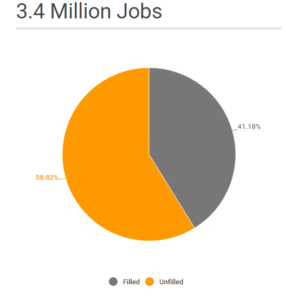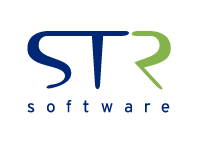
By 2025, the manufacturing and maintenance industries will need to fill an estimated 3.4 million jobs. According to a report by the Manufacturing Institute and Deloitte, 2.7 million of those 3.4 million jobs result from technicians hanging up their hardhats for good.
While other industries will be able to recruit new professionals to replace their retiring workforce, mechanics and technicians in manufacturing and maintenance will retire faster than new recruits can replace them leaving nearly 2 million jobs unfilled. If your organization belongs to either of these industries, it could face a labor shortage crisis if it doesn’t act now.

The labor shortage can be attributed to two main factors – a lack of new technicians interested in the field and a skills gap in those who are.
The Talent Shortage
Today’s education system in America places a much heavier emphasis on preparing students for college than ever before. This perceived lack of options outside of attending college combined with societal tendencies to place a higher value on traditionally “white-collar” work causes many high-school graduates to no longer see vocational schools as a viable option. These factors dramatically decrease the quality and size of the talent pool from which your company can recruit.
The shortage of new, millennial technicians cannot be addressed by any company single-handedly nor will it be resolved overnight. Fortunately, preventative strategies exist allowing you to guard against society’s uncontrollable attitudes and trends. One of the most beneficial strategies is to develop stronger relationships between your company and the high-schools and vocational schools in the community.
Such relationships provide opportunities to recruit and better educate students about the unconsidered advantages of a career in industrial maintenance. Because of a systemic push towards college, many students never consider the advantages of a skilled-labor profession because they are uninformed. Opportunities for on-the-job training, apprenticeships, union membership, and overtime pay are unique to skilled labor professions and can be a major deciding factor to go against the trend.
While societal attitudes and their implications are largely outside of your organization’s control, companies can take proactive measures to address the shrinking size of the talent pool for maintenance and manufacturing industries. Even so, once new technicians are in the door, the industry faces another challenge – addressing the skills gap between retiring technicians and new hires.
The Skills Gap
Perhaps the most valuable asset in any business is the knowledge of your tenured employees. In the face of an impending labor shortage, the question becomes this: How can you maintain this intellectual capital when your most experienced mechanics and technicians are retiring and taking their years of know-how with them?
Capture their knowledge before they retire. Look to better understand the roles that your technicians have been playing and, during their last year before retirement, document the tricks-of-the-trade they’ve developed over the years.
Transfer the knowledge from the old to the new. If the veterans’ knowledge is documented, a transfer can take place to narrow the skills gap that will exist among your new technicians. Include important insights from your seasoned technicians in the procedural documents associated with work orders. That way, the expertise of your old-timers is always in the hands of your newest technicians, even after the onboarding process.
Streamline your work packet creation process. Make it easier for your planners to provide your new technicians with the right documents for the job. Without a third-party solution like AventX Attachment Xpress, planners are forced to open each attachment individually, print them one-by-one, and then finally collate them together into a work packet. Manually completing this process leaves room for error, and inaccurate work order packets can put a technician of any experience level in danger out in the field.
AventX Attachment Xpress automatically gathers attachments with the work order and prints a complete work packet. Attachment Xpress improves documentation availability, such as detailed asset notes from tenured mechanics, and saves your planners time allowing them to focus on improving overall asset reliability and discovering new ways to preserve the knowledge of your retiring workforce.
What’s Next?
- Learn more about AventX Attachment Xpress and how it can help your company take on this labor shortage crisis
- See how AventX promotes safety for maintenance teams
- Get in touch for more information or a demo
To learn more about AventX Attachment Xpress and how it can help your company take on this labor shortage crisis, click here.




![Rollup of Product Updates [Winter 2025; v25.1]](https://www.strsoftware.com/wp-content/uploads/2023/02/Feature_Image_ProductUpdate_Wave-510x382.png)
